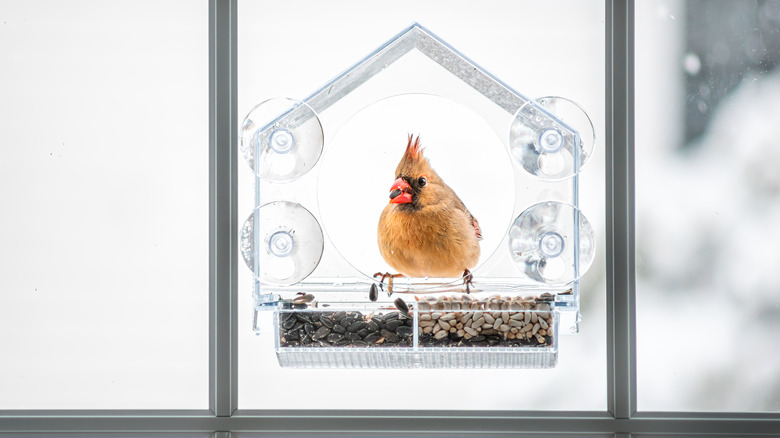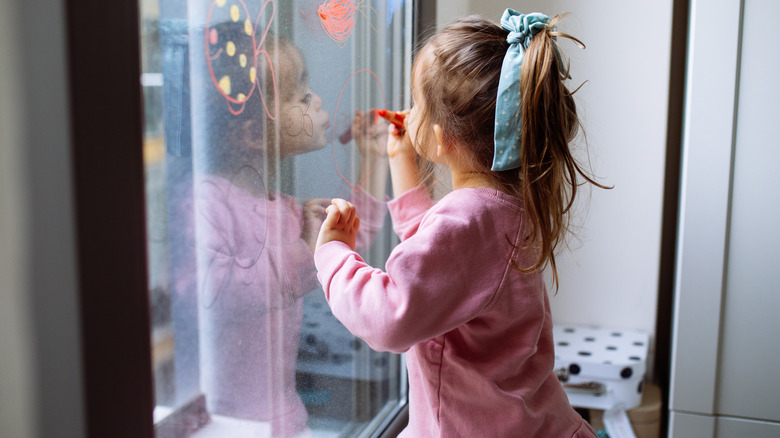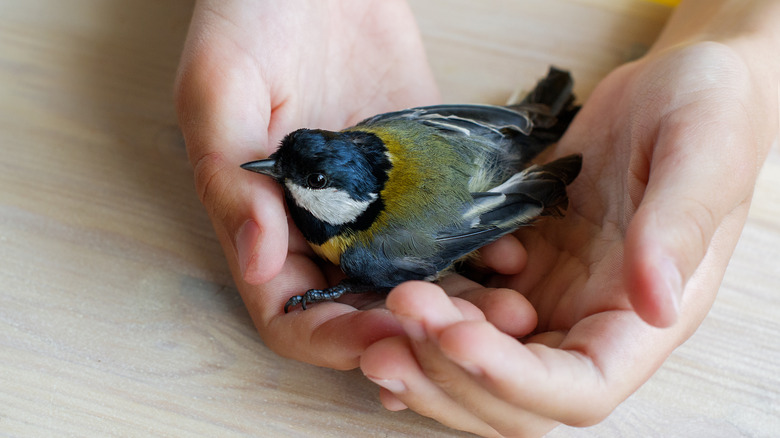How To Make Your Window Bird Feeder Safer For Your Flying Friends
Do you love watching birds in your yard but feel a constant sense of impending doom, knowing that at any minute they could fly head first into your window, at best conking themselves out and at worst lethally harming themselves? You're not alone in this Hitchcockian nightmare.
Birds hitting glass windows is a surprisingly common problem, with up to a billion of our feathered friends meeting their untimely demise due to these accidental collisions. The culprit? It's usually those reflective surfaces that trick birds into thinking they're soaring into the open sky or lush greenery, not a solid barrier.
Bird strikes, as they're called in the avian community, can be particularly prevalent in homes when homeowners make a common mistake with their bird feeder: placing it on a super reflective window. It's a tragic scene. One minute, you're enjoying your coffee, watching a cardinal nibble on seeds, and the next, you're crying over a little birdie that didn't make it past your double-glazed panes. Luckily, you can do a few things to make your feeding space safer, starting with your windows.
How can you make your window safer for birds?
First things first, let's talk about making your windows safer for our fine-feathered friends. Moving feeders to new locations can solve the problem entirely. Usually, bird strikes occur at just one or two windows. By simply relocating your feeders away from these danger zones, you might save a lot of bird lives.
But if you want to keep your window feeder, another way to prevent collisions is to make the windows more visible to birds. One option is to add window screens or netting, which act as a visual deterrent. You can also try applying markers or tape in a 2-by-2-inch grid pattern, which will allow birds to have a visual cue as to where the glass is. Just remember that these solutions must provide high visual contrast to the glass.
You can also place bird feeders and bird baths at a safe distance from windows —within 3 feet of a window so that a bird leaving the feeder can't gain enough momentum to cause harm if it strikes the window. This way, even if a bird gets a little too enthusiastic about its meal, it won't turn your home into a bird ER.
What are some other bird-safety tips?
Other options include having a bird feeder in your yard that has a large platform that prevents birds or squirrels from falling. Make sure your feeders have strong suction cups, and check their stability frequently. After all, a wobbly feeder is just an accident waiting to happen.
But what should you do if a bird does hit your window? Birds don't always die when they strike windows. Sometimes, they fly away, apparently unharmed; other times, they fall to the ground, stunned. If you find a dazed bird that does not appear to be taking off under its power, take it inside where predators can't reach it and place it in a dark container such as a shoe box, but make sure it has plenty of air. The darkness will keep the bird quiet while it revives, which should occur within a few minutes unless it is seriously injured, in which case you will need to call wildlife rehabilitators. Release the bird as soon as it appears awake and alert.
To wrap things up, making your yard a sanctuary for birds doesn't have to result in a tragic comedy of errors. By making a few adjustments to your windows and feeders, you can help make sure that your feathered visitors stay safe and sound. Remember, a happy bird-watching experience is one where the stars of the show don't end up seeing stars.


